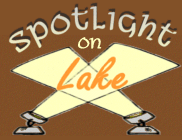
Indiana Nongame Wildlife Fund at Work: Amphibians
While many amphibians and reptiles are tucked away during the cold winter months, DNR herpetologists (the term for biologists who study reptiles and amphibians) are busy processing data collected during the previous field season. During the 2020 field season, herpetologists deployed several automated recording units around western Indiana to locate state endangered plains leopard frogs (Lithobates blairi). Recording units were attached to trees and programmed to record during the first few hours after sundown and function like wildlife trail cameras by remotely collecting data that can be analyzed back in the office. Audio recordings are scanned using call-recognition software that identifies calls of the target species. Analysis is still underway, but preliminary findings have identified a new plains leopard frog breeding site along the Wabash River in Fountain County, which is the first confirmation of the species in that county. Herpetologists plan to deploy recording units at new sites during the 2021 field season to better understand where this elusive species occurs and how it uses Indiana’s landscape.

Research on state endangered species like the plains leopard frog is funded by the Indiana Nongame Wildlife Fund. Consider donating all or a portion of your Indiana state tax refund to help at-risk species on the road to recovery. Learn more about how to donate on your taxes online.
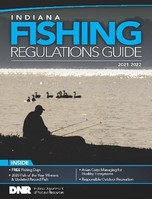 New 2021-2022 Indiana Fishing Regulations Guide available
New 2021-2022 Indiana Fishing Regulations Guide available
The 2021-2022 Indiana Fishing Regulations Guide is now available to view online. Hard copies, which are free, will be available at DNR properties and retailers by the end of February. Highlights of the new guide include the 2021 Free Fishing Days, 2020 Fish of the Year winners, State Record Fish updates, Asian carp management, and tips for recreating responsibly.

Winning steelhead trout caught by Theodore Fenicle.
2020 Fish of the Year Awards and changes
DNR recently announced winners of the 2020 Fish of the Year contest. In all, 51 awards were given to 42 different anglers for their top catches. For a full listing of winners, visit the Fish of the Year Winners website.
For those of you looking to participate this year, some minor rule changes are being implemented. A picture clearly showing the measurement of the fish being entered is now required, and a witness is no longer needed. This change allows anglers who fish alone to catch, measure, and release fish without the added hassle of finding a witness or extra stress on the fish from being unnecessarily transported.
Find a full summary of program rules, an online entry form, and listings of Fish of the Year Winners and state record fish on our website.
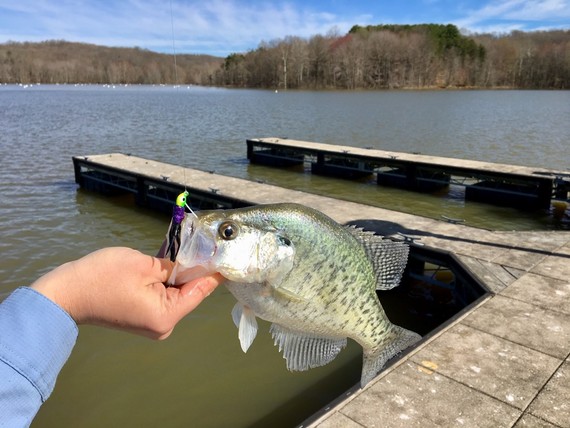
Mark your calendar for 2021 Free Fishing Days
This year's four Free Fishing Days are May 2, June 5-6, and Sept. 25. Indiana residents do not need a fishing license or a trout stamp to fish in public waters on these days. Free Fishing Days are a great opportunity to give fishing a try.
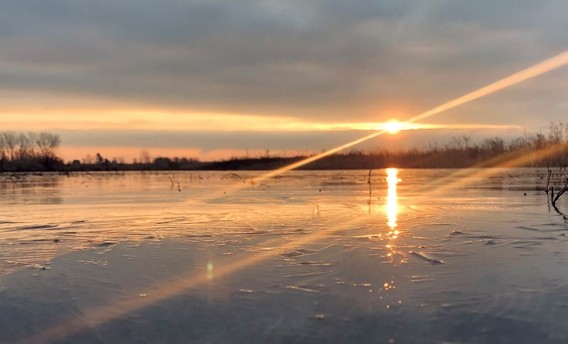
No ice is safe ice
As temperatures drop, many Hoosiers will take advantage of frozen ponds and lakes to participate in winter activities such as ice fishing, skating, hiking, or just sliding around for fun. While these activities are exciting, they can also be dangerous.
Remember that no ice is safe ice. If you don’t know the thickness of the ice, don’t go on it. Measure the thickness of ice using an ice auger. Solid ice should measure 4 inches or more for walking. Avoid going out on the ice alone, wear a life jacket, and carry ice hooks with you. Teach your children safety tips before allowing them to play on frozen lakes and streams.
With proper precautions, we can all enjoy outdoor winter activities in a responsible and safe way. To learn more about ice safety, visit our website.
DNR seeks input on proposed wildlife rule changes
DNR is seeking public comments on proposed wildlife rule changes, including updates to rules regarding legal equipment for turkey hunting, muzzleloaders for deer hunting, and beaver trapping season starting and ending times. There are two ways to submit comments:
- Submit comments online by Feb. 12 at 11:59 p.m.
- Mail comments to the Natural Resources Commission.
For a complete list of proposed amendments, details, and more information about how to comment, visit our website.
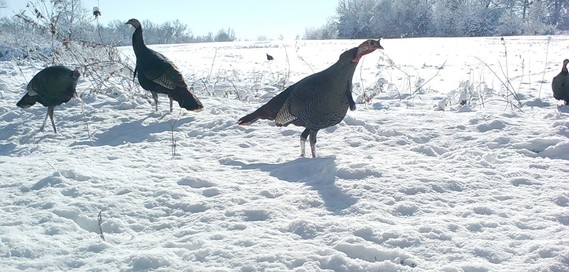
Apply for a reserved spring turkey hunt
Hunters can apply for reserved spring turkey hunts through Feb. 22. Hunters may apply for only one listed hunting opportunity. Applications must be filled out online, and no late entries will be accepted. If applying for a hunt, you must possess a hunting license that is valid for the hunt for which you are applying.
2021-22 hunting seasons dates available
The 2021-2022 hunting seasons are now posted. Dates for migratory bird and waterfowl seasons will be available in the summer. Those seasons are set by the U.S. Fish and Wildlife Service in cooperation with the DNR Division of Fish & Wildlife.
Your 2020-21 hunting and fishing licenses are valid through March 31, 2021.
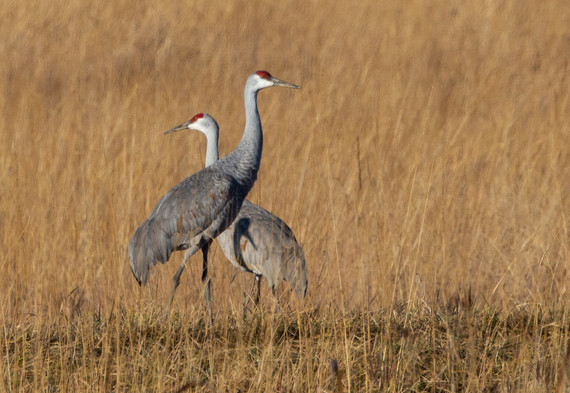
Marsh Madness Sandhill Crane Festival, Feb. 27-28
Join us virtually for the 12th annual Marsh Madness Sandhill Crane Festival! Marsh Madness is a community-based birdwatching festival held in Greene County. The event celebrates the migration of sandhill cranes and waterfowl at Goose Pond Fish & Wildlife Area (FWA), which is located on the outskirts of Linton.
Virtual programming will include birdwatching tips from the property manager and assistant property manager, a birds of prey presentation, information from the International Crane Foundation, and Facebook Live sessions from birdwatching experts in the field. While there will be no programming on site, visitors are welcome to take a self-guided driving tour of the property or stop in the Goose Pond FWA Visitor Center for more information.
Marsh Madness is led by the Friends of Goose Pond through a partnership with the Indiana Division of Fish & Wildlife. Find event details online.

Shed hunting season is here
White-tailed deer provide more than just tasty venison and magnificent sights. They also help create a scavenger hunt for shed antlers every winter. Through summer, male deer grow a new set of antlers in preparation for the fall breeding season (rut). After the rut, bucks’ testosterone levels decline and trigger the dropping of their antlers. The antler growth cycle then repeats as bucks begin growing new antlers in velvet. While shedding antlers each winter, bucks scatter thousands of these “prizes” across Indiana, and they can be picked up by anyone who finds them.
The best time to search for antlers is shortly after bucks shed but before spring green-up covers them and makes them difficult to see. Most bucks in Indiana shed antlers in February or March. Shed hunters should search where bucks spend the most time in late winter, which include places with food sources and areas with bedding cover. These include crop fields, areas with oak trees, food plots, and bramble thickets, old fields, or logged areas. As with any other outdoor activity, shed hunters need to acquire landowner permission before entering private property. This year try this fun outdoor activity as winter turns to spring to get exercise, explore, and find some new home décor.
To find a Fish & Wildlife property near you to shed hunt, visit on.IN.gov/dfwproperties. Remember to contact the property manager for permission prior to collecting sheds on a state park property or state-managed lake. Please note to legally pick up antlers that are still attached to a skull, you need a permit issued by local law enforcement or a conservation officer.
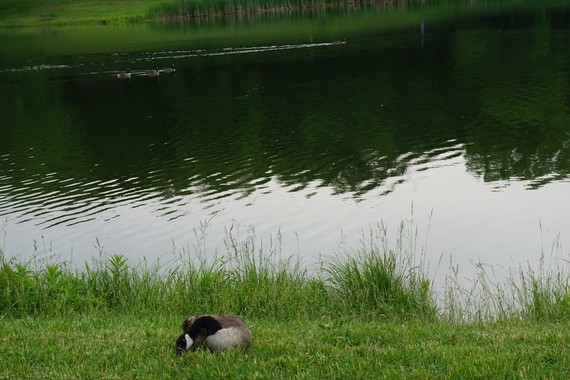
Living with Wildlife: Canada geese
February is when Canada geese begin scouting for nesting areas. If you want to keep geese off your property, now is the time to start preparing. Canada geese prefer to nest near waterbodies surrounded by short, mowed grass and often return to where they have previously nested successfully. Well-kept lawns provide geese with food and a clear line of sight to see threats. Using harassment techniques, installing fencing, and stopping supplemental feeding can help prevent unwanted nesting on your property.
Harassment techniques can be used at any time, without a permit, as long as the birds are not physically harmed. Find recommended harassment techniques, including audial, visual, and physical practices, on our website. Fencing for blocking goose access to feeding sites and water can be installed before nesting begins. While the approach may not help with flying geese, it will deter geese with young that cannot fly and need to be able to move between food and water. For more information about fencing recommendations, visit our website.
Remember, efforts to deter Canada geese will not be effective if supplemental foods such as bread or bird seed are provided.
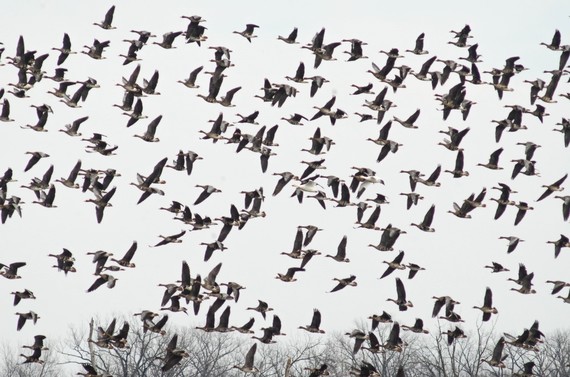
Upcoming waterfowl watching opportunities
For those interested in waterfowl, February and March is an excellent time to find a variety of geese in the state. Greater white-fronted geese, snow geese, and Ross’s geese (collectively known as “light geese”) are starting their journey to the Arctic tundra of northern Canada and Alaska, where they will breed and raise young. Luckily for us, we can catch a glimpse of this remarkable journey in Indiana. Keep an eye and ear out for this migration marvel. It often looks like a massive white tornado with black-tipped wings and emits a nearly deafening but thrilling surround sound of honking and yips.
Snow and Ross’s geese often congregate along the lower Wabash River, moving from open water to cornfields as they store energy for the long flight. Large flocks are also common at Goose Pond Fish & Wildlife Area (FWA) this time of year. White-fronted geese can be seen at some of our northern wetland properties such as Kankakee, Willow Slough, and LaSalle FWAs. In the lower half of the state, they often stop over at Goose Pond and Hovey Lake FWAs.
To find the most recent sightings of all types of geese and ducks on our state properties, check our weekly waterfowl counts.
Recent news releases
Grant applications open for Community Hunting Access Program due March 31
Otter trapping season reaches quota, closes early
Shooting range hours change for January and February
DNR seeks input on proposed wildlife rule changes
Upcoming events
-
Feb. 13 – Wood Duck Box Placement Work Day, J.E. Roush Lake Fish & Wildlife Area
-
Feb. 27 – Sandhill Crane Viewing Day, Goose Pond Fish & Wildlife Area
- Feb. 27 – Marsh Madness Sandhill Crane Festival, Goose Pond Fish & Wildlife Area
More
- Buy a license
- Hunting information
- Where to Hunt
- Fishing information
- Where to Fish
- Fish & Wildlife properties

The Indiana Natural Resources Foundation celebrates and preserves Indiana’s natural legacy by raising funds to support the Indiana Department of Natural Resources (DNR) and its programs. Together, we have helped expand public lands, restore wildlife habitat, and create outdoor educational and recreational opportunities for Hoosiers.
About Fish and Wildlife Management in Indiana
Fish and wildlife management and public access are funded by fishing and hunting license revenue and also through the Wildlife and Sport Fish Restoration Programs administered by the U.S. Fish & Wildlife Service. These programs collect excise taxes on sporting arms and ammunition, archery equipment, fishing equipment, and motor boat fuels. The money is distributed among state fish and wildlife agencies based on land size and the number of licensed anglers and hunters in each state. Find out more information about fish and wildlife management in Indiana at Wildlife.IN.gov.
